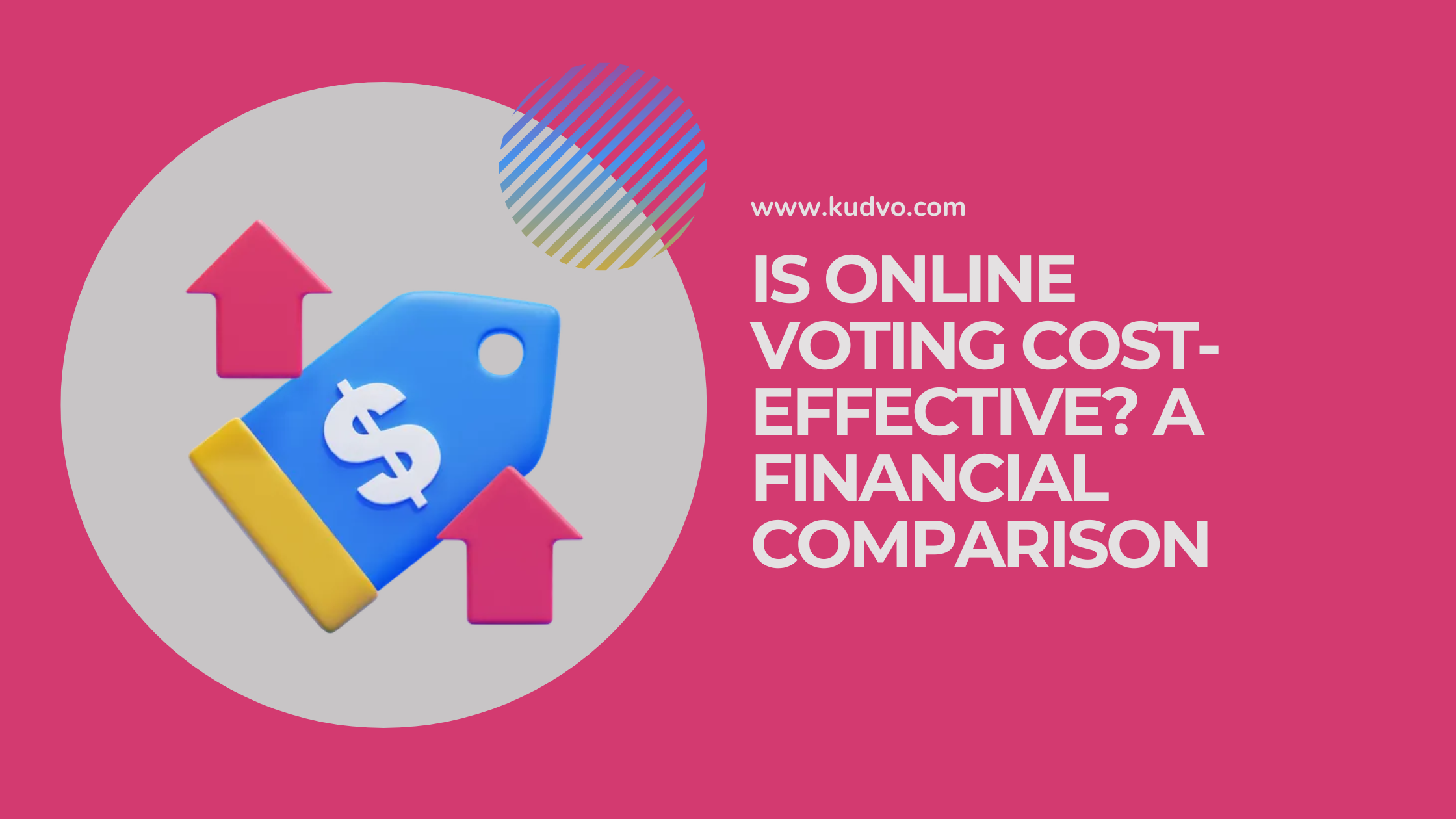Is Online Voting Cost-Effective? A Financial Comparison
Introduction
Did you know U.S. elections can cost billions of dollars nationwide?
Running traditional elections is expensive—think paper ballots, polling staff, voting machines, logistics, and more. As governments explore modernization, online voting has emerged as a potentially cost-saving alternative.
But how much money can online voting actually save? And is it worth the upfront investment?
In this post, we’ll break down the financial pros and cons of online voting versus traditional systems. You’ll get real-world examples, cost comparisons, and key insights to help you understand whether digital voting is a smart move for your organization or jurisdiction.
Brought to you by Kudvo, a secure and accessible online voting platform built for modern elections.
1. Traditional Voting Costs: What Are We Paying For?
Before we compare costs, let’s look at where the money goes in traditional elections.
Common expenses include:
Printing and mailing ballots
Hiring and training poll workers
Setting up and staffing polling locations
Voting machines and maintenance
Voter registration logistics
Ballot transportation and storage
According to the U.S. Election Assistance Commission, the average cost per voter in a traditional election can range from $7 to $25, depending on the size and complexity of the election.
Example:
In Los Angeles County’s 2020 election, the estimated cost was $300 million, covering everything from staffing to technology infrastructure.
2. Online Voting Costs: Upfront Investment vs. Long-Term Savings
Online voting systems come with different cost structures. While there may be higher initial investment, many recurring expenses are reduced or eliminated.
Online voting may include:
Software platform or licensing fees
Cybersecurity and encryption services
Voter authentication and support
System testing and auditing
Public outreach and education
Once deployed, however, online systems can scale efficiently—particularly helpful in high-turnout elections or multi-location organizations.
Potential cost benefits:
No need for paper ballots or printing
Fewer staff required
Reduced need for physical polling places
Minimal storage and logistics costs
Estonia, one of the first countries to implement nationwide online voting, estimates that its digital elections save around €11 per voter compared to traditional voting.
3. Case Studies: Financial Impact in Action
✅ Utah County, Utah (2019):
Pilot online voting for overseas voters showed improved accessibility without major cost increases. The county avoided international mailing and staffing expenses.
✅ Ontario, Canada (2018 Municipal Elections):
51 municipalities offered online or phone voting. A report showed that digital voting cut staffing and supply costs by 25–40%.
✅ Nonprofits & Unions:
Organizations like labor unions, HOAs, and professional associations that adopt platforms like Kudvo report significant savings—especially in mailing, venue rental, and labor.
4. Hidden Costs and Considerations
While online voting can be more affordable over time, it’s important to consider potential drawbacks:
Upfront Challenges:
Cybersecurity investments: Strong encryption and fraud detection are essential
Digital literacy training: Especially important in communities unfamiliar with tech
Software reliability: Requires regular testing and system updates
Still, these costs often decline over time as the system matures and adoption grows.
Pro tip:
Look for platforms that offer modular pricing and built-in accessibility features, like Kudvo, to help control implementation costs.
Conclusion
Is online voting cost-effective? In many cases—yes.
While it may require a larger investment upfront, the long-term savings in staffing, printing, logistics, and administration can be substantial, especially for recurring elections.
Organizations and governments should weigh the financial benefits alongside cybersecurity, accessibility, and user trust. With the right system in place, online voting can offer both convenience and cost-efficiency.
Explore how Kudvo can help you run secure, accessible, and cost-effective online elections today.
